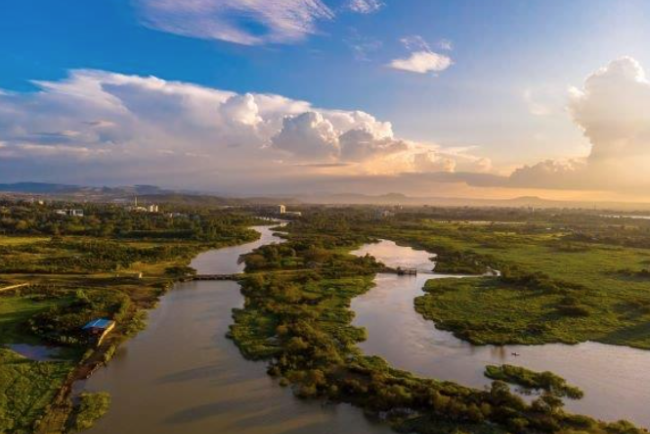
The Nile and its main tributaries flow through a large variety of ecosystems, each of great relevance for biodiversity conservation and human livelihoods, and providing important regional and local ecosystem services. The continued provision of these ecosystem services is heavily dependent on a minimum water flow, or environmental flows.
The BI supports its Member States in sustaining and enhancing Environmental Flows (or E-Flows) in the Nile Basin in a cooperative manner. Environmental Flows describe the quantity, quality and timing of water flows required to sustain freshwater and related ecosystems, as well as the human livelihoods and wellbeing that depend on these ecosystems. Environmental Flows are important for the maintenance of biodiversity and ecosystem services provided by the river, including provisioning (e.g. water as a basic human right, livelihood through fisheries), regulating (e.g. water quality and quantity), cultural and supporting services. To maintain these services, water needs to be allocated to sustain the functioning of the river ecosystem and avoid flow alterations where negative effects are foreseen.
NBI has developed a seven-phase Nile Basin Environmental Flows Framework to provide orientation for establishing and managing environmental flows in the basin It also collects and compiles best practice examples from within the region and around the world. and carries our environmental flow assessment, as a foundation for national and transboundary water allocation plans.
ecosystems which, in turn, support human cultures, economies, livelihoods, and well-being.
remaining.
ecosystem services provided by them.
The NBI Strategy for the Management of Environmental Flows was adopted by the NBI Member States in
2016 with the overarching goal "to facilitate and develop a culture of incorporation of collaborative, best
practice E-flow management into the water resource planning, management and policies of the countries who
share the Nile Basin (short term) to ultimately result in the establishment of an integrated, basin scale E-flows
management system (long term)".
The Environmental Flow Strategy was adopted by the NBI Member States in 2016 with the overarching goal "to facilitate and develop a culture of incorporation of collaborative, best practice -flow management into the water resource plannina..
NBI Environmental Flow Strategy
The Environmental Flow Strategy was adopted by the NBI Member States in 2016 with the overarching goal "to facilitate and develop a culture of incorporation of collaborative, best practice -flow management into the water resource plannina..
NI has collected studies carried out on environmental low requirements across the Nile Basin and compiled them in a database. It provides users with an overview of data and methodologies available in the region
E-Flow Database and Study Repository
NI has collected studies carried out on environmental low requirements across the Nile Basin and compiled them in a database. It provides users with an overview of data and methodologies available in the region
This course will introduce participants to the concept environmental flows. discuss different environmental flow methods that can be applied, and go through each step in the Nile E-flows Framework in detail. as well as showcase current applications. The information p...
Environmental Flows -Learning course
This course will introduce participants to the concept environmental flows. discuss different environmental flow methods that can be applied, and go through each step in the Nile E-flows Framework in detail. as well as showcase current applications. The information presented here will provide.

